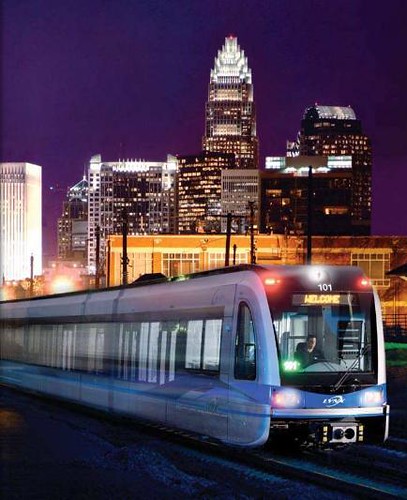Charlotte Mayor Patrick McCrory on transit
From "Charlotte Mayor Patrick McCrory advocates Bay area rail" in the Tampa Bay Business Journal:
“Wherever you put transit, it will create jobs,” he said. “The more choices you have, the more the consumer will want to live, work and play here.”
I don't think this is exactly correct. If you don't put transit in the right place, and you don't have a transit system, it may or may not work well for your community and your region. The Baltimore region is a case in point. Neither the subway line (estimated ridership: 58,000 daily) nor the current light rail system (estimated ridership: 33,500 daily) have had the kind of impact that transit has had in other regions across the county.

Light rail station in Hunt Valley, Baltimore County, Maryland.
Part of that has to do with the relative decline of Baltimore in favor of other locations in the region. But it mostly has to do with the failure to adequately place transit within the region, as well as the failure to build an extensive transit network that can move people efficiently between activity centers and neighborhoods.
The light rail line shows that putting light rail where you have right of way (an old railroad line) often isn't the right choice, as it is more important to link in-demand destinations and place neighborhood transit stations in accessible places so that people will choose to ride transit.
(Note that Rollin Stanley mentioned the Charlotte station area plans as particularly good examples of how to link land use planning to transit and transformation. I haven't checked any of them out.)

Charlotte's light rail train (photographer unknown). Charlotte has another advantage over Baltimore with the light rail in that they are using the latest generation vehicles which are much more attractive and sleek compared to the light rail vehicles deployed when Baltimore opened their system.
Labels: mobility, sustainable land use and resource planning, transportation planning, urban design/placemaking



0 Comments:
Post a Comment
<< Home